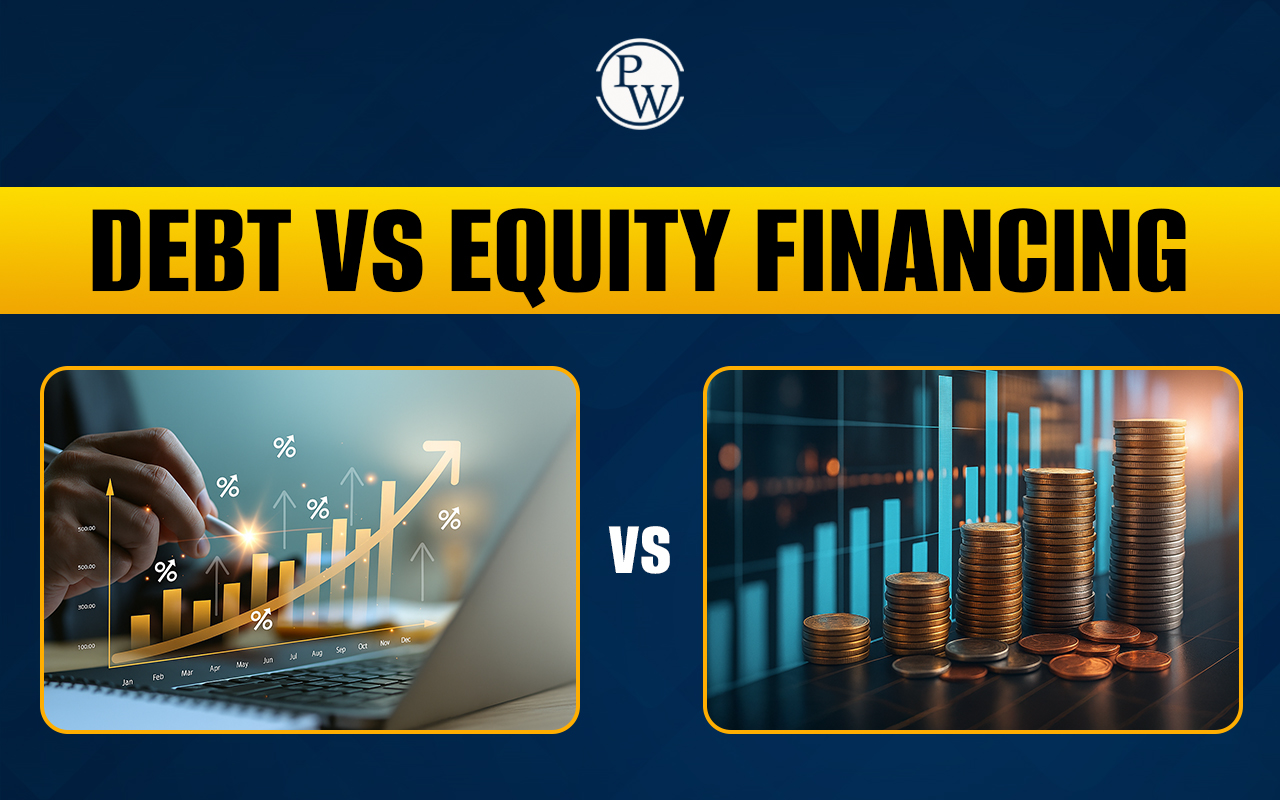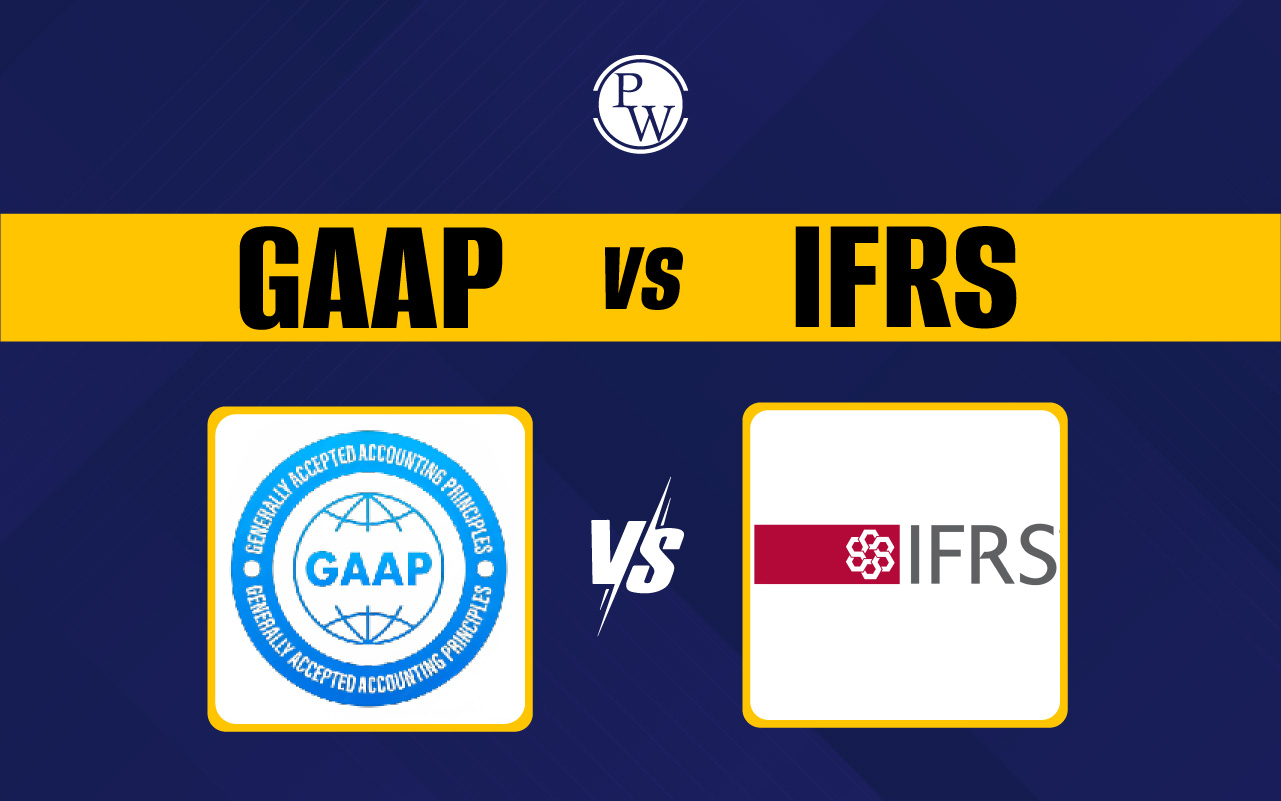

Financial assets are liquid assets that derive their value from ownership or contractual rights. Learn about their types, definitions, How Financial Assets Are Measured, and practical uses.Intangible assets that get their value from a contractual claim rather than real ownership include stocks, bonds, and bank deposits.
Financial assets, as compared to tangible assets (like real estate), are intangible yet represent the right to future financial gains like dividends or interest. They provide a contractual right to returns from other businesses and are very liquid, easily transferable, and essential for investment and wealth building. Read about financial assets, including their definition, measurement methods, classifications, real-world examples, and their significance in the modern economy.
What Are Financial Assets?
Financial assets are liquid assets that derive their value from ownership or contractual rights. Learn about their types, definitions, How Financial Assets Are Measured, and practical uses.Intangible assets that get their value from a contractual claim rather than real ownership include stocks, bonds, and bank deposits.
Financial assets, as compared to tangible assets (like real estate), are intangible yet represent the right to future financial gains like dividends or interest. They provide a contractual right to returns from other businesses and are very liquid, easily transferable, and essential for investment and wealth building.
Types of Financial Assets
The classification of Financial Assets is crucial for accounting, investing, and strategic decision-making. There are several types, each serving a unique function in financial markets and individual portfolios.
1. Cash and Cash Equivalents
These include physical currency, demand deposits, and short-term investments like treasury bills and money market funds. They are the most liquid form of Financial Assets.
2. Equity Instruments
This category comprises stocks and mutual funds that represent ownership in an entity. Investors earn returns in the form of dividends and capital appreciation.
3. Bonds (Fixed Income)
Debt instruments in which investors lend money to an issuer (such as a business or government) in return for principle repayment and regular interest payments.
4. Mutual funds
Professionally managed investment vehicles that invest in a diverse range of stocks, bonds, and other assets.
5. Derivatives
Financial agreements whose value is based on an underlying asset, including futures (which require a purchase or sale) and options (which grant the right but not the duty to buy or sell).
6. Bank Deposits
Money kept in financial institution accounts such as certificates of deposit (CDs), savings accounts, and checking accounts.
7. Loans and Advances
Money disbursed to people or companies by a financial institution, including business loans, mortgages, and personal loans.
Example of Financial Assets in Real Life
Understanding the example of financial assets in daily financial operations provides better clarity:
-
Cash in a savings account: This is a liquid asset with immediate accessibility.
-
Equity shares of a listed company: They provide ownership and dividend income.
-
Government bonds: These are considered low-risk investments with guaranteed returns.
-
Mutual fund units: Represent pooled investments in various assets.
-
Trade receivables: Businesses recognize these as amounts due from customers.
Each Financial Asset holds a monetary value that contributes to the net worth of the holder and serves a particular function in capital allocation.
Read More - What is Stock Valuation? Types & Methods
How Financial Assets Are Measured?
The measurement of Financial Assets depends on their classification under financial reporting standards such as IFRS or GAAP.
1. Fair Value Measurement
Equity and marketable securities are generally valued at fair market value. This reflects the amount for which an asset could be exchanged in a current transaction between willing parties.
2. Amortized Cost
Debt instruments held to maturity are recorded using the amortized cost method, which factors in interest income and repayment schedules over time.
3. Cost Method
Some Financial Assets, especially those without a readily available market price, are measured at the historical cost of acquisition.
The objective of measuring Financial Assets accurately is to provide stakeholders with relevant information for investment and decision-making purposes.
Why Financial Assets Matter in Modern Finance?
Financial Assets are the backbone of liquidity, investment, and capital allocation. They facilitate economic growth by enabling savings, lending, and risk management. Businesses rely on them for working capital, governments issue them to fund development projects, and individuals invest in them to build wealth.
The importance of Financial Assets lies not only in their value but also in their flexibility. Unlike real assets, they can be easily transferred, divided, or pledged as collateral.
Moreover, the development of digital platforms and fintech innovations has made access to Financial Assets more inclusive, empowering individuals to participate in capital markets with ease.
Read More - What Does a Stock Controller Do?
Risks and Limitations of Financial Assets
While Financial Assets offer significant advantages, they are not without risks:
-
Market Risk: Fluctuations in prices can affect returns, particularly for stocks and mutual funds.
-
Credit Risk: The risk that the counterparty may default on obligations.
-
Liquidity Risk: Some instruments, like corporate bonds or receivables, may not be quickly convertible into cash.
-
Interest Rate Risk: Changes in interest rates impact the value of fixed-income securities.
Proper asset diversification and risk assessment are essential when dealing with Financial Assets.
Real Assets vs. Financial Assets
Understanding the distinction between real assets and financial assets is essential for effective financial planning and investment decision-making. While both types contribute to overall wealth, they differ significantly in terms of form, liquidity, value generation, and usage.
The following table highlights the key differences between real assets and financial assets, helping investors and finance professionals make informed choices.
|
Real Assets vs. Financial Assets |
||
|---|---|---|
|
Basis |
Real Assets |
Financial Assets |
|
Physical Form |
Yes (e.g., land, gold, machinery) |
No (intangible or paper-based) |
|
Value Derived From |
Intrinsic physical properties |
Contractual claim or ownership |
|
Liquidity |
Low |
High (varies across instruments) |
|
Usage |
Direct consumption or utility |
Investment or future income |
How to Build a Portfolio with Financial Assets
Creating a diversified portfolio with Financial Assets requires understanding one’s financial goals, risk appetite, and investment horizon.
The following are steps to create a balanced Financial Asset portfolio:
-
Assess Financial Goals: Determine whether the objective is capital appreciation, income generation, or capital preservation.
-
Choose the Right Mix: Combine equities for growth, bonds for stability, and cash for liquidity.
-
Rebalance Regularly: Adjust asset allocation based on market performance and changing personal needs.
-
Consider Tax Implications: Some Financial Assets offer tax benefits, such as PPF and ELSS in India.
With proper planning, Financial Assets can help individuals and organizations meet short-term needs and long-term ambitions.
Boost Your Career with PW Certification Program in Finance, Tax and Accounting
To navigate the world of Financial Assets efficiently, one must have a strong foundation in financial concepts, reporting standards, taxation, and portfolio management. That’s where the PW Certification Program in Finance, Tax, and Accounting comes into play.
This program is designed for students, professionals, and entrepreneurs who want to strengthen their knowledge and career prospects in finance. From understanding Financial Assets to mastering tax regulations and financial reporting, the program offers hands-on skills, expert guidance, and industry recognition.
Read about financial assets, including their definition, measurement methods, classifications, real-world examples, and their significance in the modern economy.
What Are Financial Assets?
Financial assets are liquid assets that derive their value from ownership or contractual rights. Learn about their types, definitions, How Financial Assets Are Measured, and practical uses.Intangible assets that get their value from a contractual claim rather than real ownership include stocks, bonds, and bank deposits.
Financial assets, as compared to tangible assets (like real estate), are intangible yet represent the right to future financial gains like dividends or interest. They provide a contractual right to returns from other businesses and are very liquid, easily transferable, and essential for investment and wealth building.
Types of Financial Assets
The classification of Financial Assets is crucial for accounting, investing, and strategic decision-making. There are several types, each serving a unique function in financial markets and individual portfolios.
1. Cash and Cash Equivalents
These include physical currency, demand deposits, and short-term investments like treasury bills and money market funds. They are the most liquid form of Financial Assets.
2. Equity Instruments
This category comprises stocks and mutual funds that represent ownership in an entity. Investors earn returns in the form of dividends and capital appreciation.
3. Debt Instruments
These include bonds, debentures, and certificates of deposit. Investors lend capital to issuers and earn interest in return. Debt-based Financial Assets often provide a fixed income over a specific term.
4. Derivatives
Contracts such as options, futures, and swaps fall under this category. Their value is derived from the performance of an underlying asset, such as a stock or commodity.
5. Receivables and Loans
These are amounts owed to an entity by customers or borrowers. Though not traded in open markets, they are recognized as Financial Assets on balance sheets.
Example of Financial Assets in Real Life
Understanding the example of financial assets in daily financial operations provides better clarity:
-
Cash in a savings account: This is a liquid asset with immediate accessibility.
-
Equity shares of a listed company: They provide ownership and dividend income.
-
Government bonds: These are considered low-risk investments with guaranteed returns.
-
Mutual fund units: Represent pooled investments in various assets.
-
Trade receivables: Businesses recognize these as amounts due from customers.
Each Financial Asset holds a monetary value that contributes to the net worth of the holder and serves a particular function in capital allocation.
Read More - What is Stock Valuation? Types & Methods
How Financial Assets Are Measured?
The measurement of Financial Assets depends on their classification under financial reporting standards such as IFRS or GAAP.
1. Fair Value Measurement
Equity and marketable securities are generally valued at fair market value. This reflects the amount for which an asset could be exchanged in a current transaction between willing parties.
2. Amortized Cost
Debt instruments held to maturity are recorded using the amortized cost method, which factors in interest income and repayment schedules over time.
3. Cost Method
Some Financial Assets, especially those without a readily available market price, are measured at the historical cost of acquisition.
The objective of measuring Financial Assets accurately is to provide stakeholders with relevant information for investment and decision-making purposes.
Why Financial Assets Matter in Modern Finance?
Financial Assets are the backbone of liquidity, investment, and capital allocation. They facilitate economic growth by enabling savings, lending, and risk management. Businesses rely on them for working capital, governments issue them to fund development projects, and individuals invest in them to build wealth.
The importance of Financial Assets lies not only in their value but also in their flexibility. Unlike real assets, they can be easily transferred, divided, or pledged as collateral.
Moreover, the development of digital platforms and fintech innovations has made access to Financial Assets more inclusive, empowering individuals to participate in capital markets with ease.
Read More - What Does a Stock Controller Do?
Risks and Limitations of Financial Assets
While Financial Assets offer significant advantages, they are not without risks:
-
Market Risk: Fluctuations in prices can affect returns, particularly for stocks and mutual funds.
-
Credit Risk: The risk that the counterparty may default on obligations.
-
Liquidity Risk: Some instruments, like corporate bonds or receivables, may not be quickly convertible into cash.
-
Interest Rate Risk: Changes in interest rates impact the value of fixed-income securities.
Proper asset diversification and risk assessment are essential when dealing with Financial Assets.
Real Assets vs. Financial Assets
Understanding the distinction between real assets and financial assets is essential for effective financial planning and investment decision-making. While both types contribute to overall wealth, they differ significantly in terms of form, liquidity, value generation, and usage.
The following table highlights the key differences between real assets and financial assets, helping investors and finance professionals make informed choices.
|
Real Assets vs. Financial Assets |
||
|---|---|---|
|
Basis |
Real Assets |
Financial Assets |
|
Physical Form |
Yes (e.g., land, gold, machinery) |
No (intangible or paper-based) |
|
Value Derived From |
Intrinsic physical properties |
Contractual claim or ownership |
|
Liquidity |
Low |
High (varies across instruments) |
|
Usage |
Direct consumption or utility |
Investment or future income |
How to Build a Portfolio with Financial Assets
Creating a diversified portfolio with Financial Assets requires understanding one’s financial goals, risk appetite, and investment horizon.
The following are steps to create a balanced Financial Asset portfolio:
-
Assess Financial Goals: Determine whether the objective is capital appreciation, income generation, or capital preservation.
-
Choose the Right Mix: Combine equities for growth, bonds for stability, and cash for liquidity.
-
Rebalance Regularly: Adjust asset allocation based on market performance and changing personal needs.
-
Consider Tax Implications: Some Financial Assets offer tax benefits, such as PPF and ELSS in India.
With proper planning, Financial Assets can help individuals and organizations meet short-term needs and long-term ambitions.
Boost Your Career with PW Certification Program in Finance, Tax and Accounting
To navigate the world of Financial Assets efficiently, one must have a strong foundation in financial concepts, reporting standards, taxation, and portfolio management. That’s where the PW Certification Program in Finance, Tax, and Accounting comes into play.
This program is designed for students, professionals, and entrepreneurs who want to strengthen their knowledge and career prospects in finance. From understanding Financial Assets to mastering tax regulations and financial reporting, the program offers hands-on skills, expert guidance, and industry recognition.
Read about financial assets, including their definition, measurement methods, classifications, real-world examples, and their significance in the modern economy.
What Are Financial Assets?
In the evolving landscape of finance, Financial Assets have emerged as one of the most essential elements for businesses and individuals alike. These are instruments that represent the legal right to receive future benefits, generally in the form of cash or other financial instruments.
Financial Assets are typically intangible, deriving their value from a contractual claim. Unlike tangible assets such as real estate or machinery, they do not possess inherent physical worth. Instead, their value is determined by market conditions, interest rates, and credit quality of the issuing party.
They can be held by individuals, institutions, or governments and include items such as cash, stocks, bonds, mutual fund units, and receivables.
Types of Financial Assets
The classification of Financial Assets is crucial for accounting, investing, and strategic decision-making. There are several types, each serving a unique function in financial markets and individual portfolios.
1. Cash and Cash Equivalents
These include physical currency, demand deposits, and short-term investments like treasury bills and money market funds. They are the most liquid form of Financial Assets.
2. Equity Instruments
This category comprises stocks and mutual funds that represent ownership in an entity. Investors earn returns in the form of dividends and capital appreciation.
3. Debt Instruments
These include bonds, debentures, and certificates of deposit. Investors lend capital to issuers and earn interest in return. Debt-based Financial Assets often provide a fixed income over a specific term.
4. Derivatives
Contracts such as options, futures, and swaps fall under this category. Their value is derived from the performance of an underlying asset, such as a stock or commodity.
5. Receivables and Loans
These are amounts owed to an entity by customers or borrowers. Though not traded in open markets, they are recognized as Financial Assets on balance sheets.
Example of Financial Assets in Real Life
Understanding the example of financial assets in daily financial operations provides better clarity:
-
Cash in a savings account: This is a liquid asset with immediate accessibility.
-
Equity shares of a listed company: They provide ownership and dividend income.
-
Government bonds: These are considered low-risk investments with guaranteed returns.
-
Mutual fund units: Represent pooled investments in various assets.
-
Trade receivables: Businesses recognize these as amounts due from customers.
Each Financial Asset holds a monetary value that contributes to the net worth of the holder and serves a particular function in capital allocation.
Read More - What is Stock Valuation? Types & Methods
How Financial Assets Are Measured?
The measurement of Financial Assets depends on their classification under financial reporting standards such as IFRS or GAAP.
1. Fair Value Measurement
Equity and marketable securities are generally valued at fair market value. This reflects the amount for which an asset could be exchanged in a current transaction between willing parties.
2. Amortized Cost
Debt instruments held to maturity are recorded using the amortized cost method, which factors in interest income and repayment schedules over time.
3. Cost Method
Some Financial Assets, especially those without a readily available market price, are measured at the historical cost of acquisition.
The objective of measuring Financial Assets accurately is to provide stakeholders with relevant information for investment and decision-making purposes.
Why Financial Assets Matter in Modern Finance?
Financial Assets are the backbone of liquidity, investment, and capital allocation. They facilitate economic growth by enabling savings, lending, and risk management. Businesses rely on them for working capital, governments issue them to fund development projects, and individuals invest in them to build wealth.
The importance of Financial Assets lies not only in their value but also in their flexibility. Unlike real assets, they can be easily transferred, divided, or pledged as collateral.
Moreover, the development of digital platforms and fintech innovations has made access to Financial Assets more inclusive, empowering individuals to participate in capital markets with ease.
Read More - What Does a Stock Controller Do?
Risks and Limitations of Financial Assets
While Financial Assets offer significant advantages, they are not without risks:
-
Market Risk: Fluctuations in prices can affect returns, particularly for stocks and mutual funds.
-
Credit Risk: The risk that the counterparty may default on obligations.
-
Liquidity Risk: Some instruments, like corporate bonds or receivables, may not be quickly convertible into cash.
-
Interest Rate Risk: Changes in interest rates impact the value of fixed-income securities.
Proper asset diversification and risk assessment are essential when dealing with Financial Assets.
Real Assets vs. Financial Assets
Understanding the distinction between real assets and financial assets is essential for effective financial planning and investment decision-making. While both types contribute to overall wealth, they differ significantly in terms of form, liquidity, value generation, and usage.
The following table highlights the key differences between real assets and financial assets, helping investors and finance professionals make informed choices.
|
Real Assets vs. Financial Assets |
||
|---|---|---|
|
Basis |
Real Assets |
Financial Assets |
|
Physical Form |
Yes (e.g., land, gold, machinery) |
No (intangible or paper-based) |
|
Value Derived From |
Intrinsic physical properties |
Contractual claim or ownership |
|
Liquidity |
Low |
High (varies across instruments) |
|
Usage |
Direct consumption or utility |
Investment or future income |
How to Build a Portfolio with Financial Assets
Creating a diversified portfolio with Financial Assets requires understanding one’s financial goals, risk appetite, and investment horizon.
The following are steps to create a balanced Financial Asset portfolio:
-
Assess Financial Goals: Determine whether the objective is capital appreciation, income generation, or capital preservation.
-
Choose the Right Mix: Combine equities for growth, bonds for stability, and cash for liquidity.
-
Rebalance Regularly: Adjust asset allocation based on market performance and changing personal needs.
-
Consider Tax Implications: Some Financial Assets offer tax benefits, such as PPF and ELSS in India.
With proper planning, Financial Assets can help individuals and organizations meet short-term needs and long-term ambitions.
Boost Your Career with PW Certification Program in Finance, Tax and Accounting
To navigate the world of Financial Assets efficiently, one must have a strong foundation in financial concepts, reporting standards, taxation, and portfolio management. That’s where the PW Certification Program in Finance, Tax, and Accounting comes into play.
This program is designed for students, professionals, and entrepreneurs who want to strengthen their knowledge and career prospects in finance. From understanding Financial Assets to mastering tax regulations and financial reporting, the program offers hands-on skills, expert guidance, and industry recognition.
Financial Assets FAQs
What are financial assets?
What are the types of financial assets?
Can you give an example of financial assets?
Why are financial assets important?













